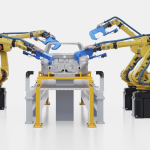A staggering 90% of supply chains are either restructuring or planning to do so, according to Gartner, as companies confront rising costs, supply disruptions, and shifting global trade dynamics. This transformation marks a decisive break from fragmented supply chain management toward a fully integrated, end-to-end approach. The shift is not just about efficiency—it’s about building agility, resilience, and strategic value in an era of volatility.
The Imperative for Integrated Supply Chain Strategies
For years, supply chains have been managed in isolated segments, with procurement, logistics, and warehousing operating independently. This fragmented approach often leads to inefficiencies and limits the ability to respond to disruptions. Gartner stresses that supply chain resilience is no longer optional—it is the key to avoiding costly setbacks and maintaining a competitive edge. Companies that fail to integrate their supply chain functions risk losing visibility, control, and ultimately market share.
By shifting to an orchestrated model, businesses can unify all aspects of their supply chain, from sourcing to delivery, creating a seamless flow of operations. This transformation not only minimizes risk but also allows companies to respond quickly to shifting market demands.
Leveraging Advanced Technologies for Proactive Supply Chain Management
Digital transformation is at the core of supply chain orchestration. Gartner highlights that companies investing in real-time decision execution will see their digital supply chain investments increase fivefold by 2028. Technologies such as artificial intelligence, machine learning, and digital twins enable businesses to model real-world scenarios, predict disruptions, and optimize logistics in real time.
Advanced analytics and automation also help companies improve resource efficiency, minimize waste, and enhance customer service. Instead of reacting to supply chain failures, businesses can anticipate challenges and adjust operations proactively.
The Strategic Role of Procurement in Building Resilience
Procurement teams play a central role in making supply chains more resilient. According to Gartner, 87% of sourcing and procurement leaders believe their supply chains must become more resilient within the next two years. To achieve this, businesses are diversifying their supplier base, strengthening supplier relationships, and integrating procurement with broader business strategy.
Gartner also advises that investments in resilience should not be seen as conflicting with cost efficiency. Companies that take a proactive approach to supply chain management often see long-term gains in revenue protection, market competitiveness, and customer satisfaction.
A New Era of Supply Chain Strategy
Supply chains are no longer just cost centers—they are strategic assets that drive business growth. Companies that embrace an orchestrated approach will be better positioned to handle disruption, optimize operations, and unlock new revenue opportunities. The future of supply chain management lies in integration, intelligence, and agility. The question is no longer whether companies should rethink their supply chains—it’s how fast they can adapt to stay ahead.







